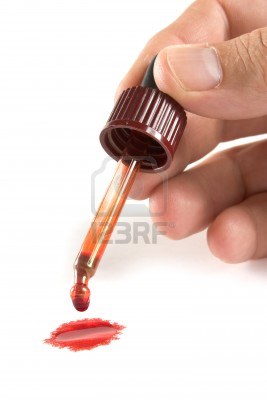Leather Testing

Always Test Before Product Use
All leathers are not created equal. Some soft leathers are more porous and absorb liquids quicker and easier, while other coated leathers will absorb very little. So to avoid damage to your leather products when applying any LeatherPlus® product, it's best to always perform a safety test prior to use.
Testing will eliminate any surprises, allowing the cleaning process to proceed safely and effectively. All testing should be done in inconspicuous areas. Keep in mind that to be thorough, several different areas should be tested. Also, if there are multiple colors or textures of leather on an individual piece of furniture, test each one.
-
Absorbency Test:
- With an eyedropper filled with water, place 2 to 3 drops onto an inconspicuous area. Allow to sit 60 to 90 seconds. Use a towel to blot away any water that remains.
- Allow test area to dry (may be accelerated with a hair dryer with caution); then, check for any change in color.
- Compare outcome to Test Results listed for leather type. If you are unsure, assume the leather to be absorbent.
Color Stability Testing
Due to the many different types of dyes and dyeing processes used in the leather industry worldwide, Color Stability Tests must be performed to prevent unpredictable results from occurring during the cleaning process. Note: it is common for leather dyes to transfer quite easily; dye transfer does not always mean the leather will be altered in appearance.
- Dry Color Transfer:
- Rub leather with a clean, white towel. Inspect towel for color transfer.
- If no color transfer has taken place, proceed to Damp Color Transfer test.
- If color transfer has taken place, inspect leather carefully for discernable visual change. If no visual change is noticeable in color, texture or finish, proceed to Damp Color Transfer test.
-
Damp Color Transfer:
- Apply LeatherPlus® Leather Cleaner to a clean, white towel. Gently wipe area as you would during normal cleaning. Allow area to dry (may be accelerated with a hair dryer). Inspect towel for color transfer.
- If no color transfer has taken place, proceed to clean according to results determined by the Absorbency Test.
- If color transfer has taken place, inspect leather carefully for discernable visual change. If no visual change is noticeable in color, texture or finish, proceed to clean according to results determined by the Absorbency Test.
Test Results
Leather can be finished in many different ways. However, in our industry there are two basic categories of leather: Absorbent and Non-absorbent. Protected (or topcoated) leather is a non-absorbent leather; Aniline (or Natural), Suede and Nubuck fall into the absorbent category.
-
Protected/Topcoated Leather:
- Water will not absorb within 90 seconds.
- Water will dry invisibly.
-
Suede/Nubuck Leather:
- Water will absorb within 90 seconds.
- Water will not dry invisibly (will darken).
-
Aniline/Natural Leather:
- Water will absorb within 90 seconds.
- Water will dry invisibly.

